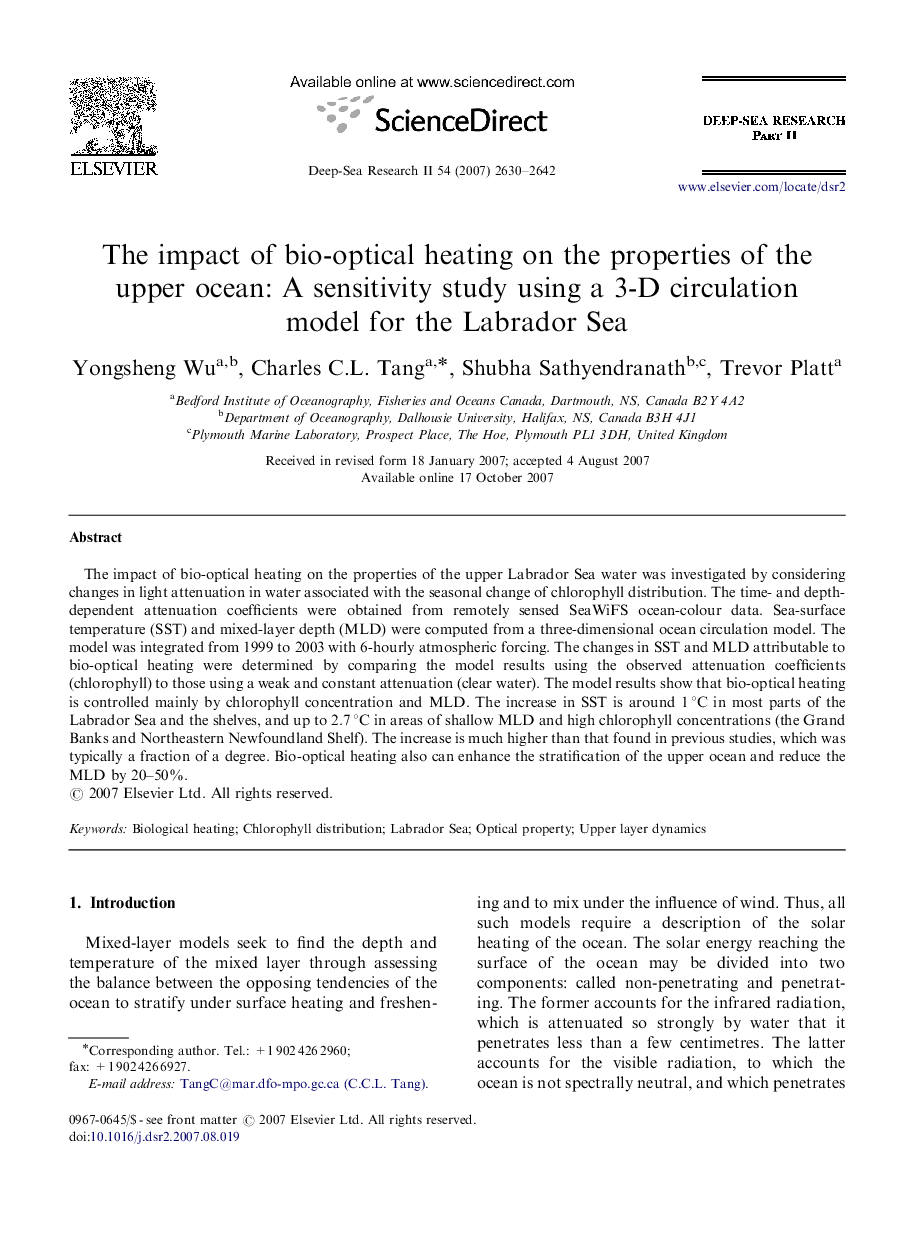| Article ID | Journal | Published Year | Pages | File Type |
|---|---|---|---|---|
| 4538177 | Deep Sea Research Part II: Topical Studies in Oceanography | 2007 | 13 Pages |
The impact of bio-optical heating on the properties of the upper Labrador Sea water was investigated by considering changes in light attenuation in water associated with the seasonal change of chlorophyll distribution. The time- and depth-dependent attenuation coefficients were obtained from remotely sensed SeaWiFS ocean-colour data. Sea-surface temperature (SST) and mixed-layer depth (MLD) were computed from a three-dimensional ocean circulation model. The model was integrated from 1999 to 2003 with 6-hourly atmospheric forcing. The changes in SST and MLD attributable to bio-optical heating were determined by comparing the model results using the observed attenuation coefficients (chlorophyll) to those using a weak and constant attenuation (clear water). The model results show that bio-optical heating is controlled mainly by chlorophyll concentration and MLD. The increase in SST is around 1 °C in most parts of the Labrador Sea and the shelves, and up to 2.7 °C in areas of shallow MLD and high chlorophyll concentrations (the Grand Banks and Northeastern Newfoundland Shelf). The increase is much higher than that found in previous studies, which was typically a fraction of a degree. Bio-optical heating also can enhance the stratification of the upper ocean and reduce the MLD by 20–50%.
